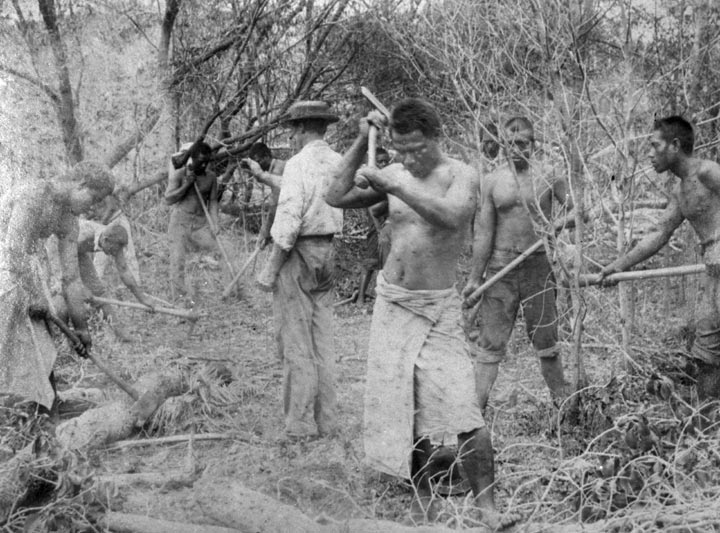 Pacific Islander labourers clearing land, c1895
Pacific Islander labourers clearing land, c1895
TLF ID R8006
This is a black-and-white photograph showing nine Pacific Islander men using picks and axes to clear undergrowth and small trees from a clearing in a thickly vegetated area at Farnborough in central Queensland. The men are bare-chested, hatless and barefoot, with some wearing sarong-like garments. A white man stands in their midst and supervises their work.
